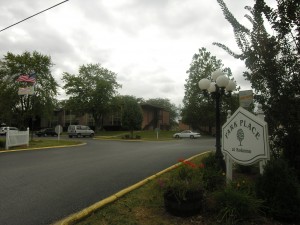Can a phony deed pass good title?
BALTIMORE, MD–When she bought this row house in December 2005, Cateania Matthews stepped into legal Adventureland.
The seller was Scotch Bonnett Realty Corporation. Scotch Bonnett was formed in 2003 by Emora Horton and Sandra Denton, then husband and wife, to buy and sell real estate. The business was to be financed with Denton’s earnings as a recording artist. Articles of incorporation were filed, naming Denton as initial sole director.
By the end of 2003 Horton and Denton were divorced, and the incorporation of Scotch Bonnett stalled. There were no by-laws, no minute book, and no officers. The only contact person of record was Richard Hackerman, an attorney who signed the articles of incorporation and was named as “resident agent.”
Following the divorce, Horton and Denton continued to do business as “Scotch Bonnett.”
Through Horton, Denton was introduced to Corey Johnson. Later, in September 2005, there was filed with the state an amendment of Scotch Bonnett’s articles of incorporation. The amendment stated “Corey Johnson is to be added as an officer of the Company.” The amendment was purportedly signed by “Richard Hackerman, President,” but Hackerman would later say this was a forgery and he had never been president of Scotch Bonnett.
Now back to Ms. Matthews. When she bought the house (December 2005) she got a deed from Scotch Bonnett signed by “Corey Johnson (Officer).” But none of the sale proceeds found their way into a Scotch Bonnett bank account, and Denton later denied Johnson’s authority to sell the property.
Scotch Bonnett filed suit against Matthews and her purchase money mortgage lender, to quiet title. When Matthews filed a Chapter 13 bankruptcy, the quiet title suit was re-filed in the bankruptcy court.
The settlement officer who handled the Matthews purchase testified in bankruptcy court. She said she relied on state filings to confirm Johnson’s authority to act on behalf of the corporation, and had no reason to suspect the amendment to articles of incorporation was a forgery. There was no suggestion that Matthews or her lender were anything other than innocent victims.
The bankruptcy court framed the question as follows: “Does the use of a deed that is neither a forged document, nor signed with a forged signature, but which derives its transactional validity from forged corporate articles of amendment, render a conveyance of land void ab initio, or, is good title transferred to bona fide purchasers for value without notice (of the fraud)?”
The bankruptcy court certified the question to the Maryland Court of Appeals (the state’s highest court), for an advisory opinion.
The Court of Appeals answered that the fraudulent deed could convey good title to a bona fide purchaser, because the deed itself was not a forgery.
The Court explained that a deed bearing a false signature is a forgery, and under the common law “forgery rule” a forged deed is null and void, at inception. On the other hand, a deed with a genuine signature but based on false authority is merely voidable, by court action. Just as any deed tainted by fraud, duress or undue influence may be voidable, but not void.
In declining to follow the forgery rule here, the Court cited “strong public policy favoring bona fide purchasers.” An expansion of the rule, the Court said, “would turn into a jury question whether fraud in the inducement voided a deed ab initio and destabilize predictability of result for bona fide purchasers for value.”
Moral: The distinction between a deed that is void, as opposed to one that’s voidable, is crucial to maintaining the legal protection for a bona fide purchaser. This protection promotes predictable outcomes for real estate transactions, and certainty in land records.
Still, the result here is stunning. A stranger to title (signing as Corey Johnson), without authority to act on behalf of Scotch Bonnett, has deeded away its property.
Title insurance typically covers many types of fraud risk, other than fraud by the insured.
The case is reported as Scotch Bonnett Realty Corporation v. Matthews, 417 Md. 570, 11 A.3d 801 (2011).























